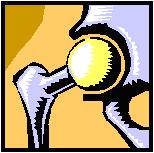|
Ehlers-Danlos Syndrome
Hypermobility Type (formerly EDS III)
 : The Hypermobility Type (formerly Type III) has the same basics
as EDS in general (skin problems etc.), but is more focused on the joint
aspect. Unlike people with the Classical Type, bruising may or maynot be
much of an issue. Instability of joints and the frequency of subluxations/
dislocations of joints in this type is generally higher. Pain is often
debilitating and can be difficult to pin down at times. Pain medications
rarely seem to work and alternate methods of management are usually explored. : The Hypermobility Type (formerly Type III) has the same basics
as EDS in general (skin problems etc.), but is more focused on the joint
aspect. Unlike people with the Classical Type, bruising may or maynot be
much of an issue. Instability of joints and the frequency of subluxations/
dislocations of joints in this type is generally higher. Pain is often
debilitating and can be difficult to pin down at times. Pain medications
rarely seem to work and alternate methods of management are usually explored.
Unlike the Vascular Type (Type IV), there is not test that can be done to
pinpoint the Hypermobility Type. Diagnosis of this type is purely clinical
for that reason, meaning that all symptoms are gathered and examined and
a diagnosis is made from that. For example, if a person had lots of nasty
bruising and scarring, the logical choice would be the Classical Type. If
pain and hypermobility were the main factors with little bruising, the
Hypermobility Type would be the best choice. The problem with this way of
going about things is that symptoms are rarely so cut and dried as that.
People with EDS can have a wide range of symptoms that can fall into more
than one area or have so set classification at this point. Geneticists
usually do the typing, but rheumatologists and other specialties have and
can as well.
Types of EDS:
Classical Type (Types I & II combined)
Hypermobile Type (Formerly Type III)
Vascular Type (Formerly Type IV) *life threatening
Kyphoscoliosis (Formerly EDS Type VI)
Arthrochalasia (Formally EDS Type VII A&B)
Dermatosparaxis (Formally EDS Type VIIC)
Links for EDS:
Website List
EDNF
EDS Today
BACK
|